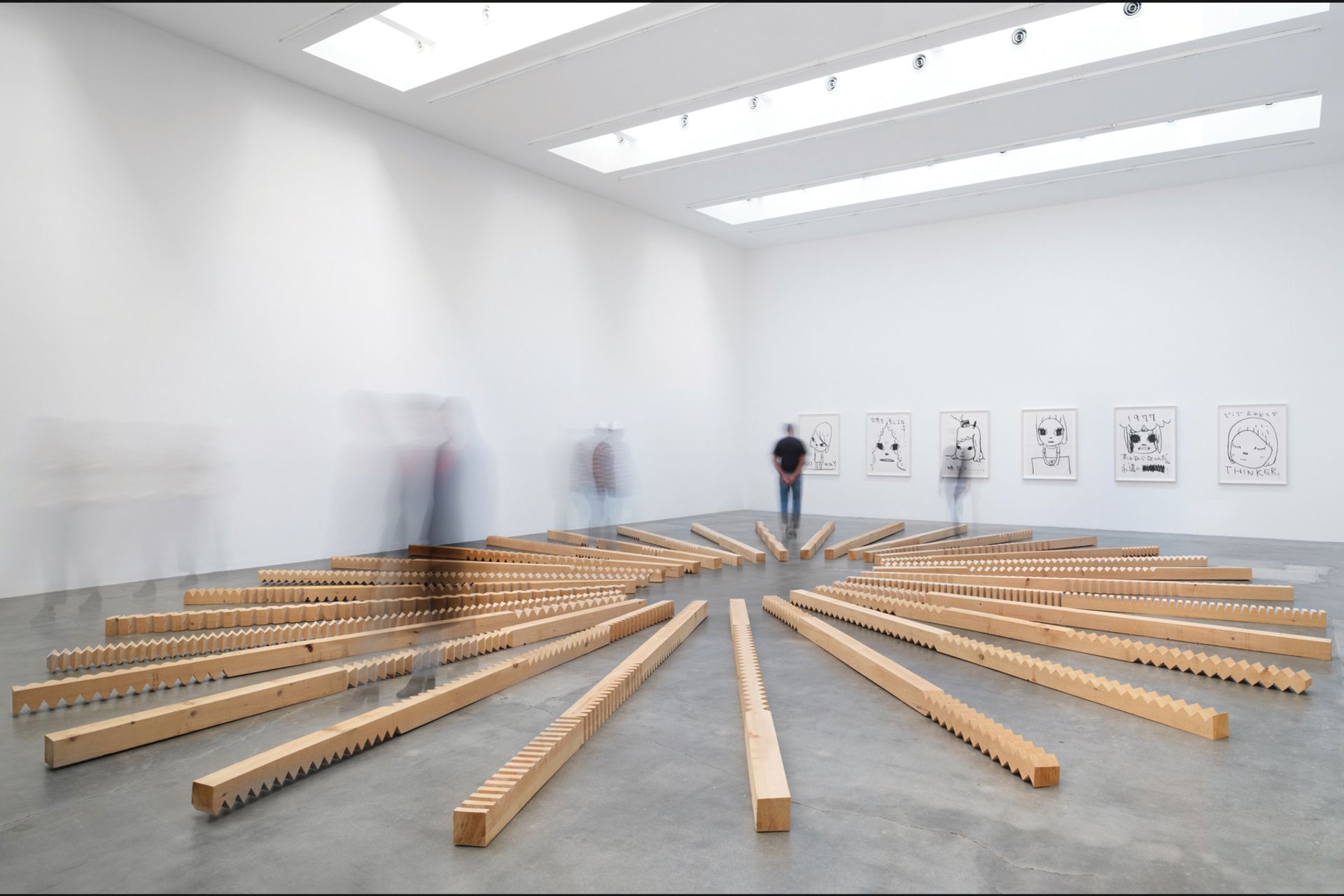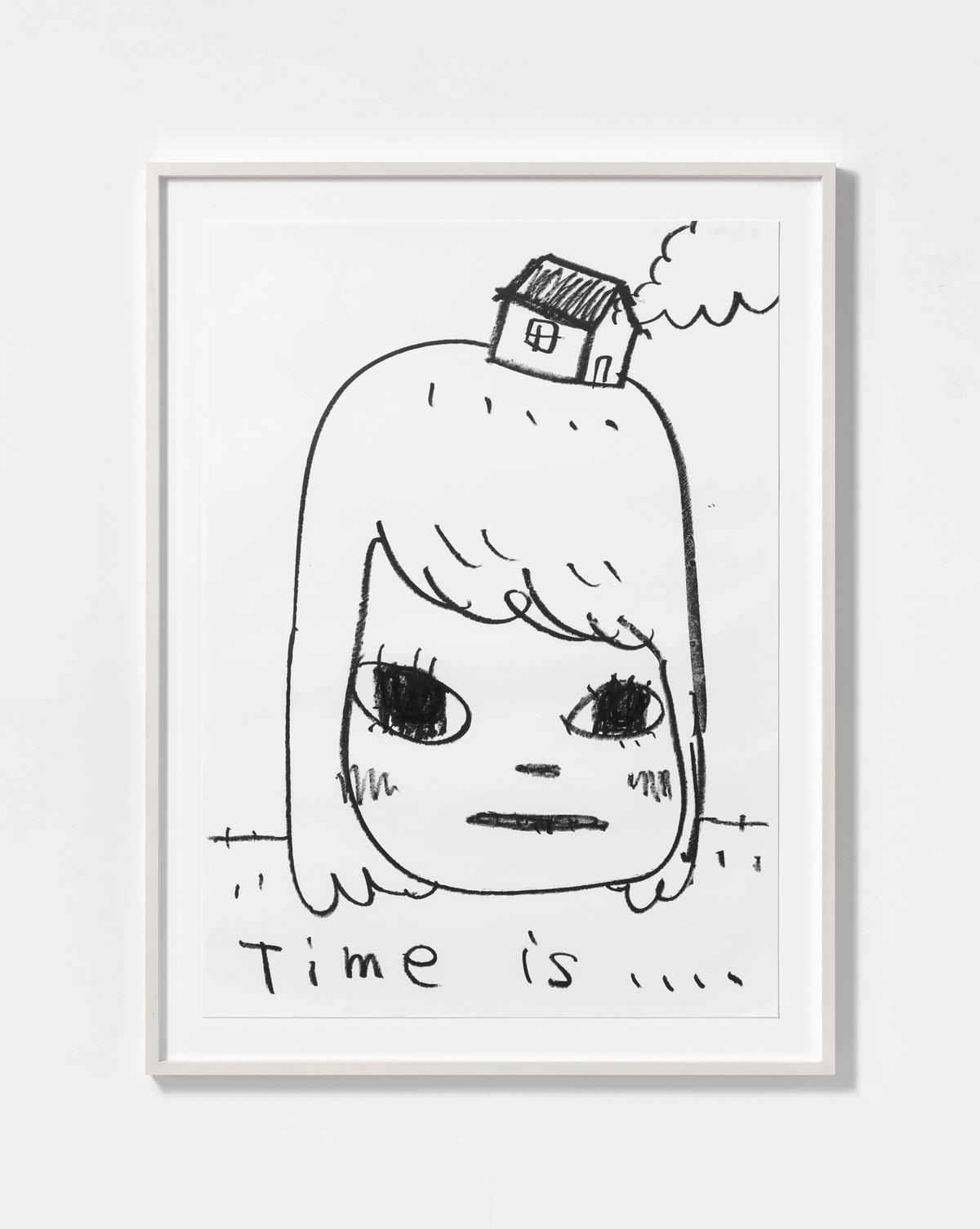When the gallerist Tim Blum was still a student at UCLA in 1984, he travelled to Tokyo for the first time and was drawn to the underground music, film and art scenes there. A decade later, after working in the city’s galleries, he gave Yoshitomo Nara his first US exhibition, a major attention-getter at and for his new gallery, Blum & Poe. Now, three decades on, the dealer has co-curated a loosely organised but highly original survey of Japanese contemporary art that doubles as a 30th-anniversary show for the gallery now known as Blum.
Tim’s role in navigating between the two worlds is pivotal and is not just about the marketMika Yoshitake, co-curator
“I by nature am not nostalgic at all, am always charging ahead, but it felt like a cool way to mark the transition,” says Blum, referring to his split with longtime gallery partner Jeff Poe last summer. “I don’t put myself out there as a curator of shows, but in this case it was accurate, as we’re telling a very personal story; the Japan thing is a big part of the gallery history and my history.”

Susumu Koshimizu's From Surface to Surface (Wooden Logs Placed in a Radial Pattern on the Ground) (1972/2004) © Susumu Koshimizu; courtesy of the artist and BLUM Los Angeles, Tokyo, New York
“Tim’s role in navigating between the two worlds is pivotal and is not just about the market; it’s much more complex,” says Mika Yoshitake, the show’s co-curator, who also organised the gallery’s seminal survey of the Mono-ha movement in 2012. “He wasn’t just trying to represent Japan and he was never exoticising Japan. He really picked up on the foundations of what contemporary art was there and had this feeling for what was current.”
Art history sample
With their new show, Thirty Years: Written with a Splash of Blood, the curators are presenting works from 1959 to 2023 made by more than two dozen artists associated with gallery, nearly half of whom are currently on its roster. It’s a sampling of recent Japanese art history, from the rugged, gesture-driven minimalism of Mono-ha to the mountainous ceramics and immersive digital work being made today.(The show will be reprised with some changes to inaugurate Blum’s new space in New York’s Tribeca neighbourhood in September.)
The show begins with a 2019 riff on Jasper Johns’s Three Flags (1958) by Yukinori Yanagi, which takes the form of a plastic box filled with coloured sand representing the red-and-white stripes of the US flag, sand in which ants make their home—and carve various paths. Here, the idea of artists as worker ants and the notion of artists as iconoclastic image-destroyers work hand-in-hand. The first major room has more sand boxes by Yanagi, along with a show-stopping sculpture from 1972 by Mono-ha artist Susumu Koshimizu made with 30 wooden beams, carved in geometric patterns, arranged on the floor in a radial pattern—an organic (and thus warmer) counterpart to the steely minimalism of Carl Andre and Donald Judd.

Takashi Murakami's DOB in the Strange Forest (1999) is the only work by the artist to appear in the show © Takashi Murakami/Kaikai Kiki Co., Ltd. All Rights Reserved; courtesy of the artist and BLUM Los Angeles, Tokyo, New York
The Mono-ha selection upstairs is also strong, with a barely-there work by Jiro Takamatsu from 1975 called Shadow of Nail No. 400, a nail driven into a wood panel like a stake through Expressionistic painting. (This is one of a dozen loans in the show not for sale.) Also playing with the very framework of the canvas is Kishio Suga’s simple and powerful Latent Extremities (1990-2016), where a forking branch replaces one corner of a wood picture frame.
Thirty Years is surprisingly thin, though, on the so-called Superflat artists. While Nara has contributed one charming marshmallow-looking bronze sculpture from 2020 called Ennui Head and some less memorable grease-stick drawings, only one work by Takashi Murakami was included: a 1999 painting of DOB, his cartoon persona, standing on a mushroom cap in a fungal forest. This weakness is especially surprising given the depth of the gallery’s role with both of these artists. Not only did Blum give both Nara and Murakami important, early exhibitions, but he brought the two together socially by introducing them to the artist Paul McCarthy, who hired them both to teach at UCLA in 1998. They ended up rooming together.
Murakami has since parted ways with Blum, which could have played a role in his being glossed over by the show. The gallery might also be a victim of its own success, as Yoshitake says it was difficult to secure desired Murakami loans in their planning period of under a year. “We were trying to get works the gallery had shown in the past, but those owners had sold them.”
- Thirty Years: Written with a Splash of Blood, Blum Gallery, Los Angeles, until 3 March


